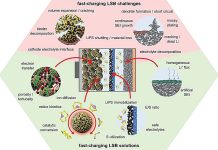
A recent study from the U.S. Department of Energy’s National Renewable Energy Laboratory (NREL) finds that closed-loop pumped storage hydropower has the lowest global warming potential (GWP) among grid-scale energy storage technologies.
The findings pave the way for more renewable energy integration into the electric grid.
The Renewable Energy Storage Problem
While renewable energy sources like wind and solar are crucial for combating climate change, their intermittent nature poses challenges for continuous electricity supply.
This intermittency risk leads to electricity curtailment, where excess generated power can’t be utilized.
Energy storage technologies are vital to solving this issue, but not all storage solutions are created equal in terms of their environmental impact.
The Study: Assessing the GWP of Energy Storage Technologies
The research team at NREL’s Strategic Energy Analysis Center examined the GWP of various energy storage technologies, including compressed-air energy storage (CAES), utility-scale lithium-ion batteries (LIBs), lead-acid (PbAc) batteries, and vanadium redox flow batteries (VRFBs), besides pumped storage hydropower.
The study is unique in its focus on “closed-loop” pumped storage hydropower, which operates independently of external water bodies.
Using water flowing between two reservoirs, these systems generate and store energy in a way that minimizes greenhouse gas emissions.
Why Closed-Loop Pumped Storage Hydropower Stands Out
According to the study, pumped storage hydropower emits a quarter of the greenhouse gases compared to CAES. On a functional unit basis, hydropower had the lowest GWP, followed by LIBs, VRFB, CAES, and PbAc.
The team used 39 preliminary designs from 35 proposed sites across the contiguous United States for their modeling.
They found that the GWP of closed-loop pumped storage hydropower ranged from 58 to 502 grams of CO2 equivalent per kWh of stored electricity delivered.
Additional Findings: Site Matters
The researchers noted that location choices can significantly affect the environmental impact. Opting for a brownfield site over a greenfield site could reduce the GWP by 20%.
Implications
The findings hold significant implications for the future of renewable energy in the U.S. Closed-loop pumped storage hydropower not only serves as a reliable, long-duration storage option but also excels in environmental sustainability.
By integrating more of these systems into the energy infrastructure, we can store excess electricity more efficiently and sustainably, thereby facilitating the transition to a greener grid.
Conclusion
As the search for climate-friendly, reliable energy storage solutions continues, this NREL study provides compelling evidence that closed-loop pumped storage hydropower is a viable and sustainable option.
The technology can play a key role in increasing the grid’s ability to accommodate renewable energy sources, thereby accelerating our journey toward a sustainable future.
The study was published in Environmental Science & Technology.
Follow us on Twitter for more articles about this topic.
Source: National Renewable Energy Laboratory



